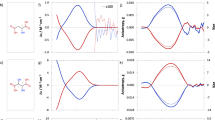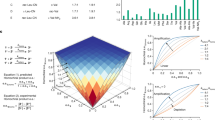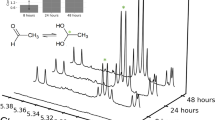Abstract
The biochemistry of terrestrial organisms is based on chiral (handed) molecules, with one of the two possible series of enantiomers (mirror-image isomers) being predominant. Specifically, terrestrial biochemistry is homochirally supported by L-α-amino acids and D-sugars to the almost complete exclusion of the enantiomeric D-α-amino acids and L-sugars. This particular homochiral selection may be a result of very small differences between the electronic energies of enantiomeric prebiotic molecules due to the parity-violating weak interactions. The energy differences are, however, so small for simple chiral molecules, that the propagation of homochirality would require a dissymmetry amplification mechanism involving both large quantities of reactants and a long reaction time. An alternative theory, presented here, considering the effects of the parity-violating weak interactions in crystalline enantio-selective prebiotic catalysts, such as the clay silicates, may require considerably less amplification.
This is a preview of subscription content, access via your institution
Access options
Subscribe to this journal
Receive 51 print issues and online access
$199.00 per year
only $3.90 per issue
Buy this article
- Purchase on Springer Link
- Instant access to full article PDF
Prices may be subject to local taxes which are calculated during checkout
Similar content being viewed by others
References
Fischer, E. Chem. Ber. 27, 2985–2993, 3189–3232 (1894).
Joyce, G. F. et al. Nature 310, 602–604 (1984).
Idelson, M. & Blout, E. R. J. Am. chem. Soc. 80, 2387–2393 (1958).
Blair, N. E., Dirbas, F. M. & Bonner, W. A. Tetrahedron 37, 27–29 (1981).
Mason, S. F. Nature 311, 19–23 (1984).
Weinberg, S. Phys. Rev. Lett. 19, 1264–1266 (1967).
Salam, A. in Proc. 8th Nobel Symp. Elementary Particle Physics (ed Svartholm, N.) 367 (Almquist and Wiksell, Stockholm, 1968).
Rein, D. W. J. molec. Evol. 4, 15–22 (1974).
Zel'dovich, B. Ya., Saakyan, D. B. & Sobel'man, I. I. Soviet Phys. J. exp. theor. Phys. 25, 94–97 (1977).
Rein, D. W., Hegstrom, R. A. & Sandars, P. G. H. Phys. Lett. A 71, 499–502 (1979).
Hegstrom, R. A., Rein, D. W. & Sandars, P. G. H. J. chem. Phys. 73, 2329–2341 (1980).
Mason, S. F. & Tranter, G. E. Molec. Phys. 53, 1091–1111 (1984).
Mason, S. F. & Tranter, G. E. Proc. R. Soc. A397, 45–65 (1985).
Tranter, G. E. Chem. Phys. Lett. 120, 93–96 (1985).
Tranter, G. E. Molec. Phys. (in the press).
Tranter, G. E. Chem. Phys. Lett. 115, 286–290 (1985).
Frank, F. C. Biochim biophys. Acta 11, 459–463 (1953).
Kondepudi, D. K. & Nelson, G. W. Phys. Rev. Lett. 50, 1023–1026 (1983).
Kondepudi, D. K. & Nelson, G. W. Phys. Lett. 106A, 203–206 (1984).
Kondepudi, D. K. & Nelson, G. W. Nature 314, 438–441 (1985).
Yagamata, Y. J. theor. Biol. 11, 495–498 (1966).
Keszthelyi, L. Phys. Lett. 64A, 287–288 (1977).
Palache, C., Berman, H. & Frondel, C. in Dana's System of Mineralogy, 7th edn, Vol. 3, 16 (Wiley, New York, 1962).
Thiemann, W. & Darge, W. Origins Life 5, 263–283 (1974).
Kovacs, K. L. Origins Life 9, 219–233 (1979); 11, 37–52 (1981).
Cairns-Smith, A. G. in Genetic Takeover and the Mineral Origins of Life (Cambridge University Press, 1982).
Schwartz, A. W. & Orgel, L. E. J. molec. Evol. 21, 299–300 (1985).
Coyne, L., Sweeney, M. & Hovatter, W. J. Lumin. 28, 395–409 (1983).
Kavasmaneck, P. R. & Bonner, W. A. J. Am. chem. Soc. 99, 44–50 (1977).
Furuyama, S., Sawada, M., Machiya, K. & Morimoto, T. Bull. chem. Soc. Jap. 55, 3394–3397 (1982).
Weissbuch, I. et al. Nature 310, 161–162 (1984).
Author information
Authors and Affiliations
Rights and permissions
About this article
Cite this article
Tranter, G. Parity-violating energy differences of chiral minerals and the origin of biomolecular homochirality. Nature 318, 172–173 (1985). https://doi.org/10.1038/318172a0
Received:
Accepted:
Issue Date:
DOI: https://doi.org/10.1038/318172a0
This article is cited by
-
Stochastic aspects of asymmetric autocatalysis and absolute asymmetric synthesis
Journal of Mathematical Chemistry (2010)
-
Darwin’s warm little pond revisited: from molecules to the origin of life
Naturwissenschaften (2009)
-
Effect of isomerization of amino acid residues on the structure of aquaporin
Journal of Structural Chemistry (2006)
Comments
By submitting a comment you agree to abide by our Terms and Community Guidelines. If you find something abusive or that does not comply with our terms or guidelines please flag it as inappropriate.



